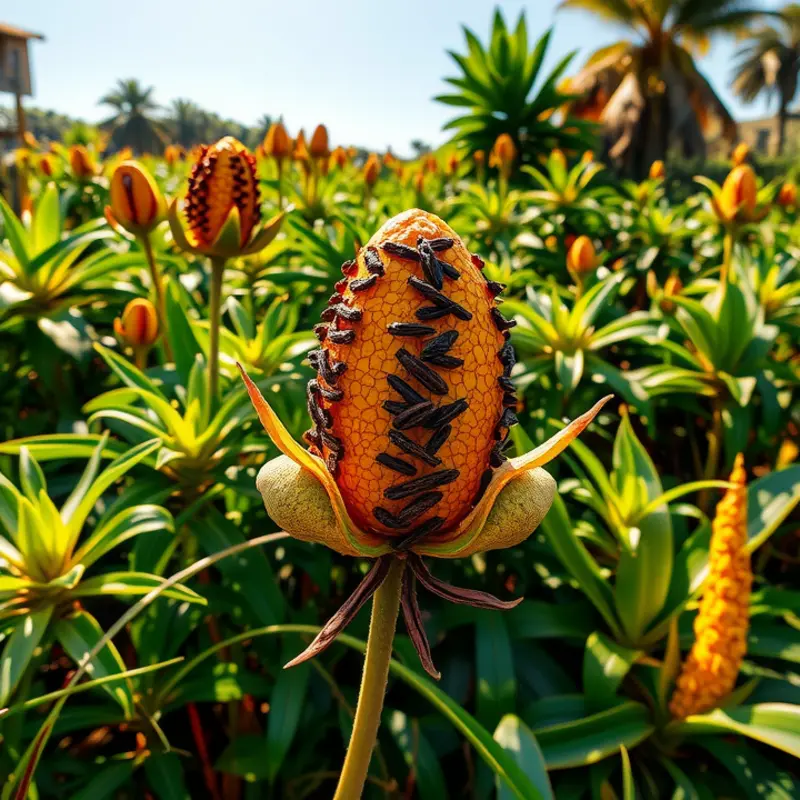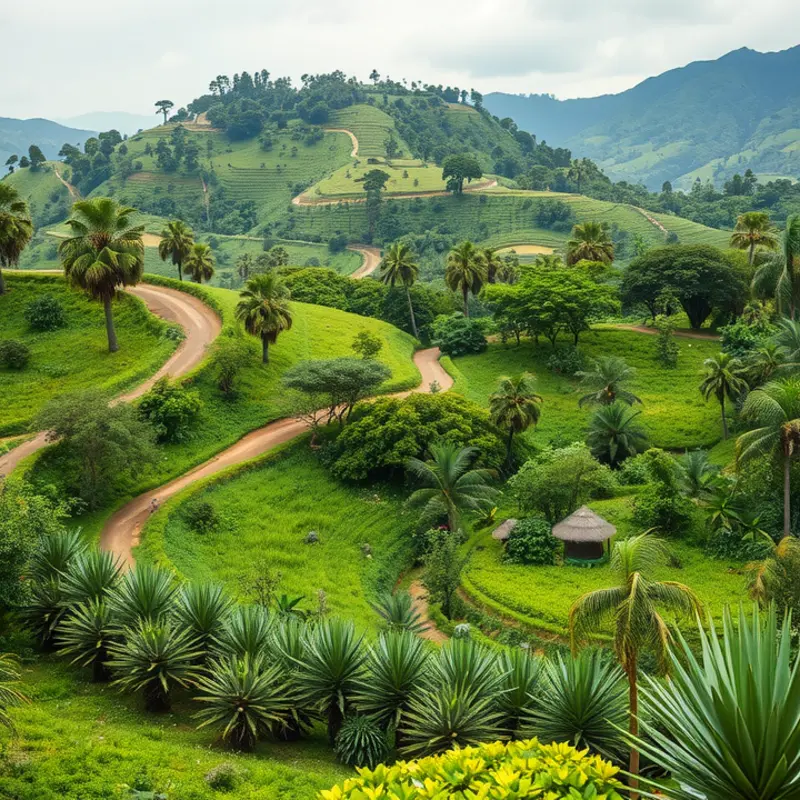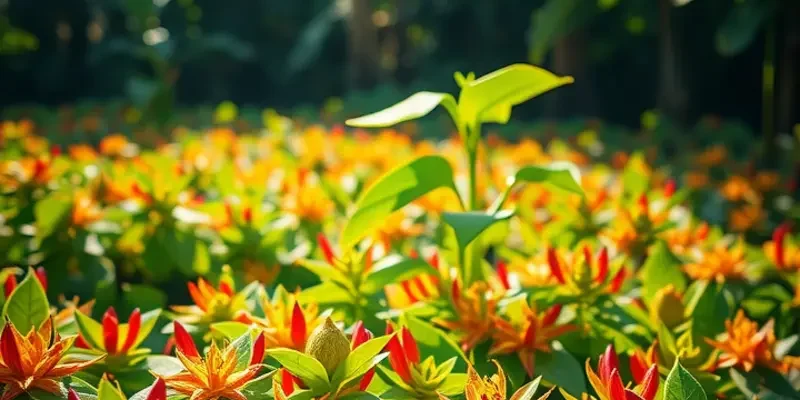Spice trading routes are not just pathways; they’re a rich tapestry woven into the fabric of culinary history. Stretching from the distant Spice Islands of Southeast Asia to the bustling markets of Europe and the Middle East, these routes have forged connections and exchanged flavors that continue to inspire food lovers today. Join me on a journey that unveils the secrets of spices, their origins, and how they’ve transformed cuisines across cultures.
The Origins of Flavor: The Spice Islands

Nestled in the heart of the Indonesian archipelago, the Spice Islands—commonly known as the Moluccas—played a pivotal role in the global spice trade. Renowned for their fertile soil and tropical climate, these islands birthed some of the world’s most treasured spices: cloves, nutmeg, and mace. Mariners, merchants, and marauders alike were lured by the intoxicating aroma wafting from these lush isles. Their allure ignited fervent exploration and fierce competition among European powers.
The voyage to the Spice Islands was not solely a quest for economic gain but also a cultural exchange that reshaped cuisines across continents. Clove-scented breezes intertwined with tales of distant lands as Arabic, Chinese, and Indian traders set up temporary homes in the bustling ports of Ternate and Tidore. These interactions infused the local culinary landscape with rich, diverse flavors.
Cloves, a native to the Moluccas, were coveted not only for their pungent flavor unmasking the mystique of exotic dishes but also for their medicinal properties. Medieval Europe treated cloves as a luxury, a testament to one’s wealth. Nutmeg, often coupled with mace, became synonymous with festive cheer, dotting holiday dishes with its warm, nutty profile. Mystical tales surrounded these spices, believed to possess aphrodisiacal and magico-religious attributes, endearing them further to traders and conquistadors.
The spice trade transformed the Moluccas into vibrant cultural crossroads, where Eastern and Western cultures collided and collaborated. This culinary fusion birthed new recipes that spread along the spice routes. Indian curries, Chinese stir-fries, and Middle Eastern tagines were subtly enhanced by these nuanced spices, illustrating the shared palate of an interconnected world.
However, the desirability of the Spice Islands was a double-edged sword. European powers erected forts, eagerly staking claims and sparking territorial conflicts. The Portuguese, Dutch, and English battled tenaciously over these fragrant isles, hoping to monopolize the lucrative spice trade. The aftermath of these conflicts influenced and altered culinary trends in Europe, prompting experimentation with exotic ingredients.
Spices, once seen as luxuries, gradually became integral to daily cooking, thanks to these early trade routes. They inspired flavorful experimentation within more modest households, often seen in culinary influences from trade. This democratization of flavor broadened culinary horizons and paved the way for today’s fusion cuisine.
While geopolitical strife marred the history of the Spice Islands, their contribution to global gastronomy remains undeniable. The aromatic spices from these islands transcended political boundaries and resonated within kitchens worldwide. Today, they continue to inspire chefs and home cooks, acting as historical ambassadors of flavor, unlocking the past with every sprinkle and grate. Indeed, the enduring legacy of the Spice Islands is found in this cross-pollination of tastes, articulated in dishes that whisper secrets of the spice routes.
The Journey of Flavors: Spice Routes to Your Plate

The ancient spice routes were the arteries of commerce that interwove civilizations, creating not only trade opportunities but cultural exchanges that transcended borders. Spanning continents and oceans, the spice routes were responsible for the widespread dissemination of flavors that have become integral to various local cuisines.
Understanding this journey begins with spices such as cinnamon, which originates from Sri Lanka and southern India. Known for its sweet and woody aroma, cinnamon was one of the earliest traded spices, coveted for its preservation qualities and warmth. It found its way into Middle Eastern tagines, North African beverages, and European pastries, enhancing everything from savory dishes to sweet desserts.
Travelers along the spice routes also carried with them precious black pepper, the ‘king of spices.’ Originating from the Malabar Coast in India, black pepper’s distinctive pungency offered a stark contrast to other flavor profiles available at the time. Its versatility allowed it to become a cornerstone of culinary practices across Asia, the Middle East, and Europe. From seasoning meats to spicing up soups, its ability to enhance flavor without overpowering made it an essential ingredient across cuisines.
Then there is saffron, the gold among spices, with its delicate threads derived from the crocus flower primarily in Iran, Spain, and India. Esteemed for its floral fragrance and vibrant color, saffron adds a distinctive touch to rice dishes such as biryani and paella, as well as Persian stews and Middle Eastern desserts. A pinch of saffron transforms both the aesthetic and flavor of any dish it graces, making it highly prized along the spice routes.
As the spices journeyed across these routes, they facilitated rich exchanges not just in flavor but in cooking techniques and food preservation methods. This blending of culinary traditions gave rise to global fusion cuisine long before the term became fashionable.
For instance, paprika, originally from the New World, was swiftly incorporated into Hungarian and Spanish cuisines via the spice routes. The unique exchange not only broadened palates but also fortified food culture as a connective thread between diverse communities.
The spice routes also paved the way for the development of storage techniques essential for preserving the life and flavor of these precious commodities. To delve more into modern safe storage methods inspired by these ancient practices, consider exploring this guide on storing ingredients. These techniques ensure that the spices retain their potency and continue to enhance global cuisines.
Through the timeless journey of spices, we can see the world reflected in our kitchen cabinets. The ancient spice routes have left a lasting imprint, allowing us to enjoy a rich tapestry of flavors at every meal, artfully mingled and appreciated worldwide.
Final words
The story of spice trading routes is a testament to humanity’s desire for flavor, connection, and cultural exchange. Spices not only enhance the taste of our meals but also tell tales of ancient journeys and intricate trade relationships that shaped culinary practices. By appreciating these storied ingredients, we celebrate the diversity of global cuisines. As you cook, think about the journey each spice has taken to reach your kitchen, enriching your food experiences with history and culture.








